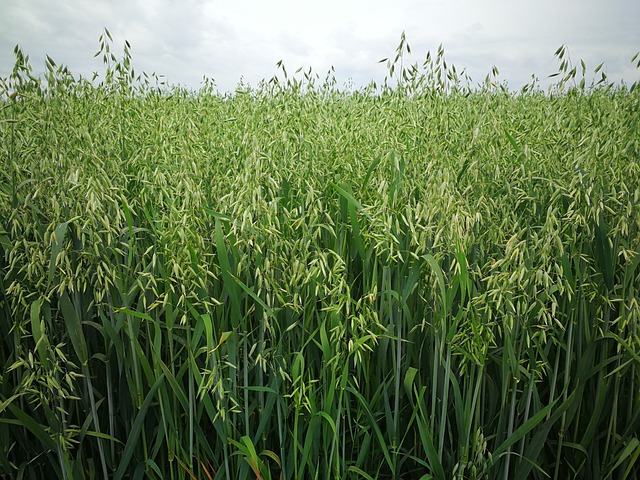The Comprehensive Guide to Avena Sativa: Unveiling Its Nutritional Profile and Health Benefits
Table of Contents
- Introduction
- What is Avena Sativa?
- Nutritional Profile
- Health Benefits
- How It Works
- Usage & Dosage
- Possible Side Effects
- Frequently Asked Questions (FAQs)
- Conclusion
- References
Introduction
Avena sativa, commonly known as oats, is a globally recognized cereal grain that has nourished civilizations for centuries. It's not just a staple breakfast item but is also renowned for its myriad of health benefits that stem from its rich nutritional composition. From heart health to blood sugar regulation, the humble oats play a significant role in promoting overall wellness.
What is Avena Sativa?
Avena sativa is a species of cereal grain that belongs to the Poaceae family. Originating in Asia Minor, oats are now grown worldwide due to their adaptability to various climates. The grain is harvested after its growth cycle, post which it undergoes processing to remove its inedible outer husk. This leaves us with the edible oat groats, which can be further processed into various forms such as steel-cut oats, rolled oats, and oat bran.
Nutritional Profile
Avena sativa boasts a remarkable nutritional profile, brimming with essential nutrients that contribute to its health-promoting properties. A 100-gram serving of raw oats offers:
- Calories: 389
- Protein: 16.9 grams
- Fat: 6.9 grams
- Carbohydrates: 66.3 grams
- Dietary fiber: 10.6 grams
- Sugars: 0 grams
- Calcium: 54 milligrams
- Iron: 4.72 milligrams
- Magnesium: 177 milligrams
- Phosphorus: 523 milligrams
- Potassium: 429 milligrams
- Sodium: 2 milligrams
- Zinc: 3.97 milligrams
- Copper: 0.626 milligrams
- Manganese: 4.9 milligrams
- Selenium: 34.4 micrograms
- Thiamin (Vitamin B1): 0.763 milligrams
- Riboflavin (Vitamin B2): 0.139 milligrams
- Niacin (Vitamin B3): 0.961 milligrams
- Pantothenic acid (Vitamin B5): 1.349 milligrams
- Vitamin B6: 0.119 milligrams
- Folate (Vitamin B9): 56 micrograms
- Vitamin E: 0.42 milligrams
- Vitamin K: 2 micrograms
The nutrient-rich composition of oats is complemented by a high fiber content, primarily beta-glucan, a soluble fiber known for its cholesterol-lowering effect.
Health Benefits
The wealth of nutrients in Avena sativa contributes to a range of health benefits. Some of the most recognized benefits of Avena sativa include:
- Heart Health: The beta-glucan in oats helps in reducing the levels of total and LDL ("bad") cholesterol without affecting the HDL ("good") cholesterol. This contributes to a lower risk of heart disease[1].
- Blood Sugar Control: Oats have a low glycemic index, which means they are slowly digested and gradually release sugar into the bloodstream. This aids in maintaining a steady blood sugar level, making oats a suitable food for people with diabetes[2].
- Digestive Health: The high fiber content of oats contributes to improved bowel movement, reducing the risk of constipation. The fiber also aids in promoting a feeling of fullness, which can aid in weight management[3].
- Skin Health: Colloidal oatmeal, produced from finely-ground oats, has been recognized for its skin benefits, including soothing itching and irritation associated with conditions like eczema[4].
- Bone Health: Oats contain an array of minerals such as calcium, phosphorus, and magnesium, which are vital for bone health. Regular consumption of oats can contribute to maintaining bone density and preventing osteoporosis[5].
How It Works
The health benefits of Avena sativa can be attributed to its nutritional composition, particularly its fiber content, namely beta-glucan. Beta-glucan is a type of soluble fiber that forms a gel-like substance when mixed with water. This gel binds with cholesterol-rich bile acids in the intestine, which are then excreted from the body. This process helps to lower the overall cholesterol levels in the body[6].
Furthermore, beta-glucan slows down the rate of digestion, which results in a slower absorption of sugars into the bloodstream, assisting in blood sugar control. It also promotes satiety, thereby aiding in weight management[7].
Usage & Dosage
Oats can be incorporated into the diet in various forms, including oatmeal, granola, muesli, and as an ingredient in baked goods. The daily recommended intake of oats is not explicitly defined; however, a serving size of 30 to 40 grams of dry oats is commonly suggested for adults.
While oats are generally safe for most people, it's always recommended to consult a healthcare professional before making significant changes to your dietary regimen, particularly for individuals with specific health conditions.
Possible Side Effects
Oats are typically well-tolerated; however, some individuals may experience digestive symptoms such as bloating and gas due to the high fiber content. In rare cases, individuals with avenin sensitivity, a protein in oats, may experience similar symptoms to those with gluten intolerance.
It's crucial to note that while oats are naturally gluten-free, they may be processed in facilities that also process wheat, leading to potential cross-contamination. Individuals with celiac disease or a severe gluten intolerance should opt for oats that are certified gluten-free.
Frequently Asked Questions (FAQs)
Q1: Are oats suitable for individuals with gluten intolerance?
A: Oats are naturally gluten-free. However, they may be contaminated with gluten if processed in facilities that also process wheat. Individuals with celiac disease or severe gluten intolerance should opt for oats that are certified gluten-free.
Q2: Can oats be consumed raw?
A: While oats can technically be eaten raw, they are usually soaked in liquid, such as milk or yogurt, to make them easier to eat and digest. This is commonly done in recipes for overnight oats.
Q3: Are there different types of oats?
A: Yes, there are several types of oats including steel-cut oats, rolled oats, quick oats, and instant oats. The difference lies in the processing method, which affects the texture and cooking time.
Q4: Can oats cause bloating?
A: Some people may experience bloating or gas due to the high fiber content in oats. Introducing oats gradually into the diet and drinking plenty of water can help minimize these effects.
Q5: Can I eat oats if I have diabetes?
A: Yes, oats have a low glycemic index, which means they can help maintain steady blood sugar levels. However, flavored or instant oats may have added sugars and should be consumed in moderation.
Conclusion
Avena sativa, or oats, is a versatile grain that offers a multitude of health benefits, thanks to its impressive nutritional profile. From supporting heart health to regulating blood sugar levels, oats make a valuable addition to a balanced diet. Despite its humble nature, the impact of this grain on human health is profound and continues to be supported by scientific research. As we incorporate oats into our meals, we not only nourish our bodies but also take a step towards holistic wellness.
References
- Whitehead A, Beck EJ, Tosh S, Wolever TM. Cholesterol-lowering effects of oat β-glucan: a meta-analysis of randomized controlled trials. Am J Clin Nutr. 2014;100(6):1413-1421. doi:10.3945/ajcn.114.086108
- Jenkins DJ, Kendall CW, Augustin LS, et al. Effect of legumes as part of a low glycemic index diet on glycemic control and cardiovascular risk factors in type 2 diabetes mellitus: a randomized controlled trial. Arch Intern Med. 2012;172(21):1653-1660. doi:10.1001/2013.jamainternmed.70
- Maki KC, Beiseigel JM, Jonnalagadda SS, et al. Whole-grain ready-to-eat oat cereal, as part of a dietary program for weight loss, reduces low-density lipoprotein cholesterol in adults with overweight and obesity more than a dietary program including low-fiber control foods. J Am Diet Assoc. 2010;110(2):205-214. doi:10.1016/j.jada.2009.10.037
- Pazyar N, Yaghoobi R, Kazerouni A, Feily A. Oatmeal in dermatology: a brief review. Indian J Dermatol Venereol Leprol. 2012;78(2):142-145. doi:10.4103/0378-6323.93629
- Ho HVT, Jovanovski E, Zurbau A, et al. A systematic review and meta-analysis of randomized controlled trials of the effect of barley β-glucan on LDL-C, non-HDL-C and apoB for cardiovascular disease risk reduction. Eur J Clin Nutr. 2016;70(11):1239-1245. doi:10.1038/ejcn.2016.89
- Zhu X, Sun X, Wang M, Zhang C, Cao Y, Mo G, Liang J, Zhu S. Quantitative assessment of the effects of beta-glucan intake on serum cholesterol and triglyceride levels in humans. J Am Coll Nutr. 2019;38(6):513-522. doi:10.1080/07315724.2018.1523010
- Rebello CJ, O'Neil CE, Greenway FL. Dietary fiber and satiety: the effects of oats on satiety. Nutr Rev. 2016;74(2):131-147. doi:10.1093/nutrit/nuv063
- Queenan KM, Stewart ML, Smith KN, et al. Concentrated oat β-glucan, a fermentable fiber, lowers serum cholesterol in hypercholesterolemic adults in a randomized controlled trial. Nutr J. 2007;6:6. doi:10.1186/1475-2891-6-6
- Rasane P, Jha A, Sabikhi L, Kumar A, Unnikrishnan VS. Nutritional advantages of oats and opportunities for its processing as value added foods - a review. J Food Sci Technol. 2015;52(2):662-675. doi:10.1007/s13197-013-1072-1
- Paudel KR, Panth N. Phytochemical profile and biological activity of Avena sativa. J Integr Med. 2016;14(1):5-16. doi:10.1016/S2095-4964(16)60237-3



